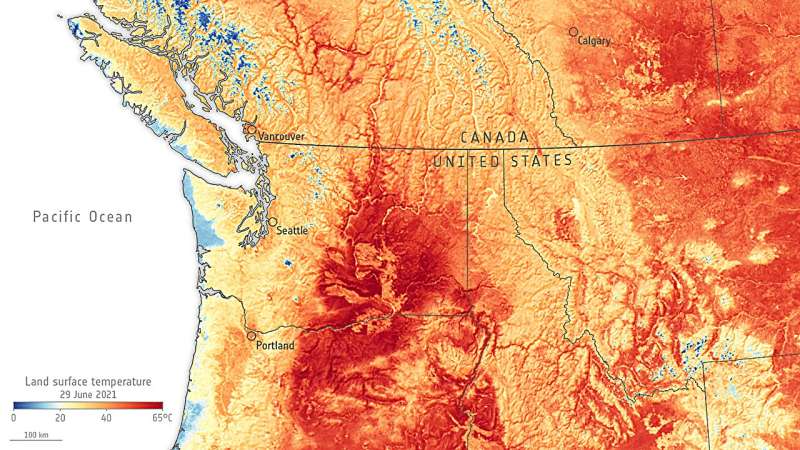Discover how cutting-edge deep learning models are transforming the accuracy and lead time of weather predictions, enabling communities to better prepare for extreme events like the devastating 2021 Pacific Northwest heatwave. This groundbreaking research offers a glimpse into the future of weather forecasting and its potential to save lives. Machine learning and weather forecasting are converging to create a new era of climate resilience.

Unleashing the Potential of Deep Learning for Extreme Weather Forecasting
Traditional weather forecasting models have long been constrained by the inherent complexities of atmospheric and surface conditions. Small changes in factors like temperature and humidity can have far-reaching, unpredictable effects on future weather patterns, making accurate long-term forecasts a significant challenge.
But now, a team of researchers has harnessed the power of deep learning to unlock new possibilities in extreme weather prediction. By using advanced neural network models like GraphCast and Pangu-Weather, they have achieved a remarkable 94% reduction in 10-day forecast errors for the record-breaking June 2021 Pacific Northwest heatwave.
This breakthrough holds immense promise for communities around the world, as longer lead times can mean the difference between life and death when facing extreme weather events. With deep learning-powered forecasts, local authorities and emergency services can plan and prepare more effectively, potentially mitigating the devastating impacts of phenomena like heatwaves, hurricanes, and droughts.
Unlocking the Secrets of Atmospheric Sensitivity: A Deep Dive into the Research
The key to this remarkable advancement lies in the researchers’ innovative approach to understanding the relationship between initial atmospheric conditions and forecast accuracy.
Traditionally, meteorologists have relied on adjoint models to determine how small changes in factors like temperature and humidity can affect the accuracy of a weather forecast a few days later. However, these models require significant financial and computing resources, and they can only reliably measure these sensitivities up to five days in advance.
Entering the deep learning realm, the researchers sought to find a more efficient and accurate way to determine the optimal set of initial conditions for a 10-day forecast. By training their deep learning models on vast datasets, they were able to uncover the complex, nonlinear relationships between initial conditions and forecast errors, far exceeding the capabilities of traditional adjoint models.
When tested on the June 2021 Pacific Northwest heatwave, the deep learning approach resulted in a 94% reduction in 10-day forecast errors, a remarkable improvement that could transform the way we prepare for and respond to extreme weather events.
Moreover, the researchers found that their deep learning-powered forecasts could accurately predict conditions up to 23 days in advance, a significant leap forward in the field of weather forecasting.
This groundbreaking research not only demonstrates the immense potential of machine learning in the realm of atmospheric science but also highlights the critical importance of continued investment and innovation in this rapidly evolving field.
Embracing a Future of Climate Resilience: The Transformative Impact of Deep Learning in Weather Forecasting
As the impacts of climate change become increasingly severe and unpredictable, the need for accurate and reliable weather forecasting has never been more pressing. The ability to anticipate and prepare for extreme weather events can mean the difference between life and death for vulnerable communities.
The research showcased in this study offers a glimmer of hope, as it underscores the transformative potential of deep learning in revolutionizing the field of weather forecasting. By harnessing the power of advanced neural networks, scientists can now uncover the intricate relationships between initial atmospheric conditions and the accuracy of long-term weather predictions, paving the way for more effective preparation and response strategies.
As the world grapples with the challenges posed by a rapidly changing climate, it is imperative that we embrace the latest advancements in technology and scientific research. By investing in and further developing deep learning-powered weather forecasting models, we can empower communities to better safeguard themselves against the devastating effects of extreme weather events, ultimately building a more resilient and sustainable future for all.
